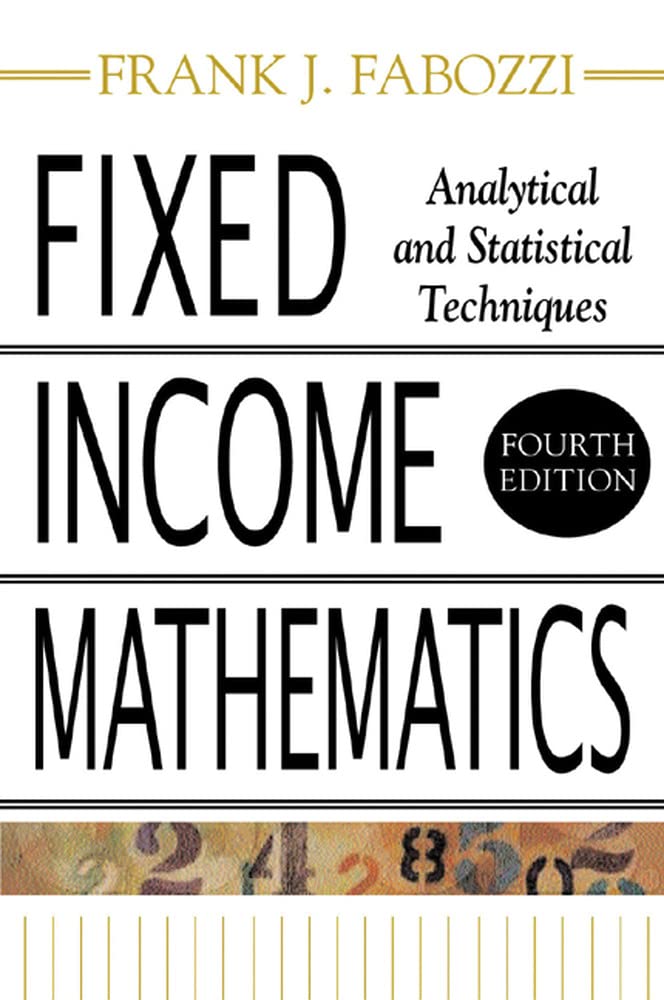Fixed Income Mathematics
Analytical & Statistical Techniques

The concepts and methodologies for evaluating fixed income securities have changed dramatically over the past decade. Fixed Income Mathematics, Fourth Edition, explains the numbers behind these changes and provides you with the knowledge you need to consistently control both the cost and risk of investing in debt.
Along with updated material on the new generation of asset-backed securities (ABS), updated sections on statistical techniques, and simulation and optimization models, this updated fourth edition features new chapters on:
- Interest rate modeling
- Credit risk concepts and measures for corporate bonds
- Prepayment modeling
- Basics of MBS structuring
- Statistical techniques for credit scoring and risk factor identification
- Tracking error and multi-factor risk models
Fixed Income Mathematics features material and analysis on yield measures for fixed rate bonds and floating rate bonds, key rate duration and yield curve curvature, cash flow characteristics of collateralized debt obligations, and much more. It is quite simply the necessary reference volume for fixed income portfolio managers and practitioners.
For nearly two decades, Frank Fabozzi's classic Fixed Income Mathematics has provided portfolio managers and other finance professionals with the industry's most comprehensive, easy-to-understand reference for making the most profitable fixed income investment decisions by dramatically improving the precision of the numbers that underlie those decisions. Now Fabozzi gives you the latest on the unprecedented number of new analytical tools and techniques that have recently been introduced to structured finance.More than thirty accessible chapters cover fundamental and all-new aspects of the constantly evolving fixed income field, including:
- Time Value of Money--How to compute future value of an investment, present value of cash flows, and yield
- Bond Pricing for Option Free Bonds and Conventional Yield Measures--How value is determined, conventional yield and spread measures for bonds, the yield curve, and the determination of spot rates and forward rates
- Return Analysis--potential sources of monetary return, use of total return, and techniques for measuring the historical return for a portfolio
- Price Volatility for Option-Free Bonds--Price volatility of bonds without embedded options, two measures of price volatility, how to calculate convexity, and measures for quantifying the exposure of a shift in the yield curve
- Analyzing Bonds with Embedded Options--Interest rate modeling, investment and price characteristics of options, and techniques for valuing bonds with embedded options
- Credit Risk--Credit risk concepts and measures for corporate bond and credit analysis
- Analyzing Securitized Products--Measures used for securitized products, cash flow characteristics of amortizing loans and MBS, results of recent prepayment models, the structuring process, analysis of agency MBS
- Statistical Techniques and Their Applications in Fixed Income Analysis--Basics of probability theory and statistics, regression analysis, credit scoring and risk factor identification, tracking error, Monte Carlo simulation, optimization techniques
To deal with the complexity of fixed income instruments, you have to embrace new valuation methodologies, analytical techniques, and frameworks for credit risk modeling. Fixed Income Mathematics arms you with these new tools, explaining how to implement them and successfully integrate them into existing investment programs.





